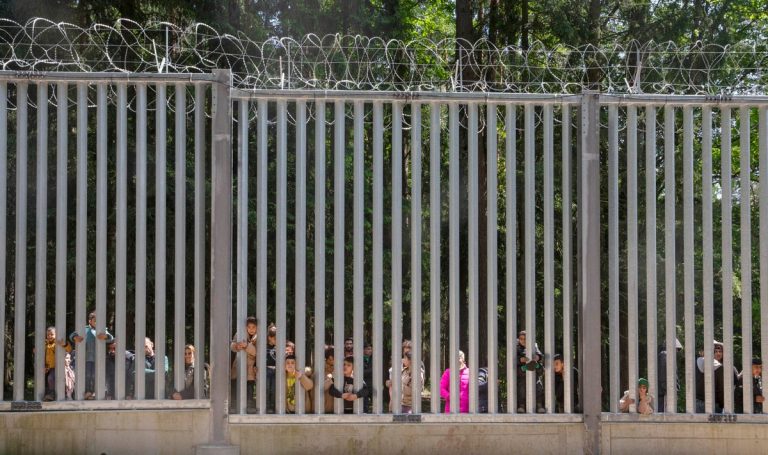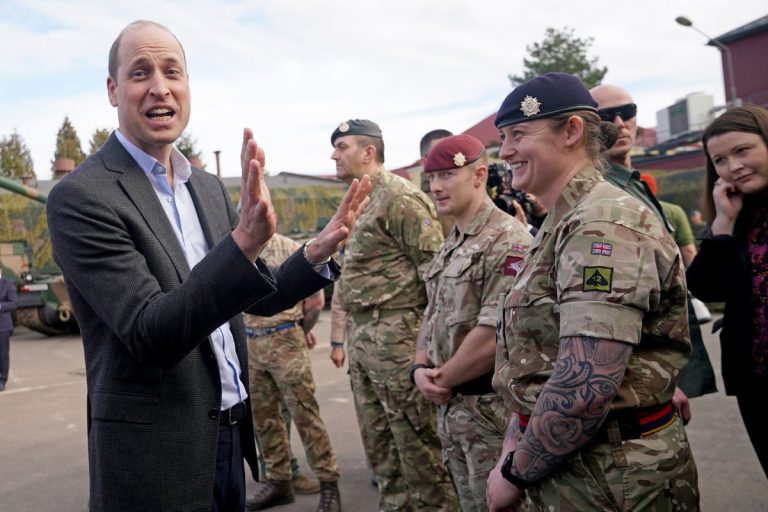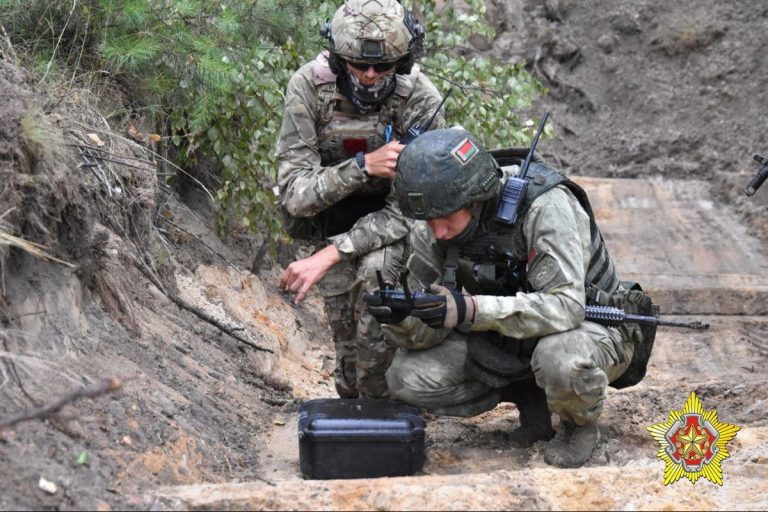Architects look to Warsaw for lessons on rebuilding Ukraine from rubble | Poland
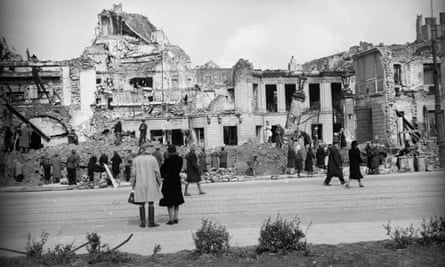
The idea of Warsaw as a phoenix city, reconstructed from ruins after the second world war, is a key part of the Polish capital’s identity. Now, an exhibition has shed fresh light on the innovative way the rebuilding effort used ruins and rubble to create a new city.
The exhibition, which has run over recent weeks at the Museum of Warsaw, argues that rubble is to Warsaw what Carrara marble is to Rome or Portland stone to London. It shows how millions of bricks were repurposed for use in new buildings, and how vast amounts of rubble were crushed to create a new building material known as “rubble concrete” used in the construction of many postwar projects.
According to the exhibition curator, Adam Przywara, Warsaw’s postwar history offers more than just historical curiosity. “There are two areas of contemporary relevance: the idea of sustainable architecture, and how it might relate to rebuilding in Ukraine,” he said.
The exhibit has been visited by architects and city planners looking to Warsaw’s experience for inspiration as they work on the reconstruction of Ukrainian cities damaged by Russia’s invasion.
The rubble clearance effort in 1945 at the site of the Blank Palace on Theatre Square, Warsaw. Photograph: Museum of Warsaw
“The best revenge against the Russians would be to build better from the very rubble they created,” said Natasha Kozub, an architect from Kharkiv who is part of Ro3kvit, a collective of architects and urban planners looking at potential solutions for the postwar reconstruction of Ukraine.
“It’s symbolic and sustainable, but it would also have to be economically viable. In Warsaw, they did experiments to see the different costs and we would have to do this in Ukraine, too,” she said.
Warsaw was subjected to a planned programme of destruction by German forces in late 1944, as retribution for the Warsaw Uprising against Nazi rule earlier that year. Several neighbourhoods were razed to the ground, with 84% of the buildings on the left bank of the Vistula River destroyed.
When people began trickling back to the city in early 1945, they found a landscape of mounds of bricks and craters.
The city’s Old Town was rebuilt from scratch in the postwar years after it was almost entirely destroyed in 1944, and many other parts of the city were reconstructed according to principles of socialist urban planning.
Many European cities had to be completely rebuilt after the second world war. In Germany, the photographs of the Trümmerfrauen, or “rubble women”, working to clear the rubble, became almost mythical figures of the postwar years.
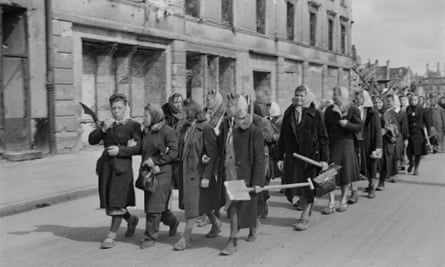 A labour brigade making its way to a rubble-clearance operation in Warsaw in 1945. Photograph: Museum of Warsaw
A labour brigade making its way to a rubble-clearance operation in Warsaw in 1945. Photograph: Museum of Warsaw
But in Poland, the symbolism was different, said Przywara.
“Poland was unique because the idea of the rubble was embedded in the modernisation drive … It was seen as a symbol of the superiority of the socialist system over the capitalist one that rather than going to waste, these materials would be recycled,” he said.
Przywara first got interested in the topic while taking walks in Warsaw’s parks, where after heavy rains sometimes loose bricks could be found dislodged, that had been piled up there in the postwar period. He noticed that most of the bricks had inscriptions on them, with the name of the brickworks that had made them.
“There were hundreds of brickworks in Warsaw before the war, and each of them had their own stamp. Many of the owners were Jewish, and this was an industry that never came back after the war,” he said.
The bricks are of different sizes, as Polish, German and Russian brick manufacturers used machinery that operated according to differing measurements.
 Bricks from the rubble of Warsaw on display at the exhibition. Photograph: Museum of Warsaw
Bricks from the rubble of Warsaw on display at the exhibition. Photograph: Museum of Warsaw
Some of the rebuilding was done with bricks salvaged from the rubble. A campaign across Poland to recover bricks from partially destroyed buildings collected about 9m bricks in Warsaw.
It means many of Warsaw’s current buildings are in fact constructed from a patchwork of bricks from other former buildings – a hidden nod to the city’s troubled history.
Rubble was also used to build mounds for memorials, while large quantities were dumped in the Vistula. In the area of the former Warsaw ghetto, a new residential district was constructed on top of the rubble, leaving slopes and mounds of rubble around the new buildings, a mix of remembrance with a large dose of calculated forgetting.
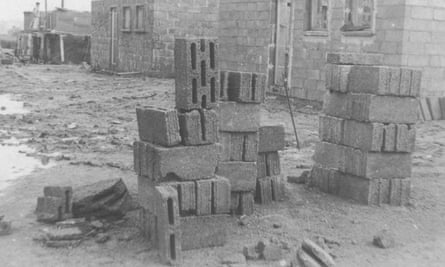 Blocks to be used in the construction of experimental crushed-rubble concrete houses in Warsaw in 1948. Photograph: Museum of Warsaw
Blocks to be used in the construction of experimental crushed-rubble concrete houses in Warsaw in 1948. Photograph: Museum of Warsaw
The new socialist government bought Swiss machines, in exchange for coal, which could crush rubble debris and turn it into rubble concrete. The government experimented with the substance to see if it could work in the construction of new buildings, and decided it could. Numerous buildings in the capital were made using the material, including the first headquarters of the Polish Workers’ party, a housing estate and several cinemas.
It was an early forerunner of contemporary debates about sustainable building, in which the concept of “circular architecture” has gained currency.
“Every year, the EU produces more rubble waste from construction and demolition than was produced during the six years of war in Warsaw,” said Przywara.
In Ukraine, too, the concept could prove useful, though there are other challenges to take into account. “In Ukraine, much of the rubble is contaminated with lead or asbestos, so we have to pay attention to this and think about ways to recycle it,” said Kozub.

